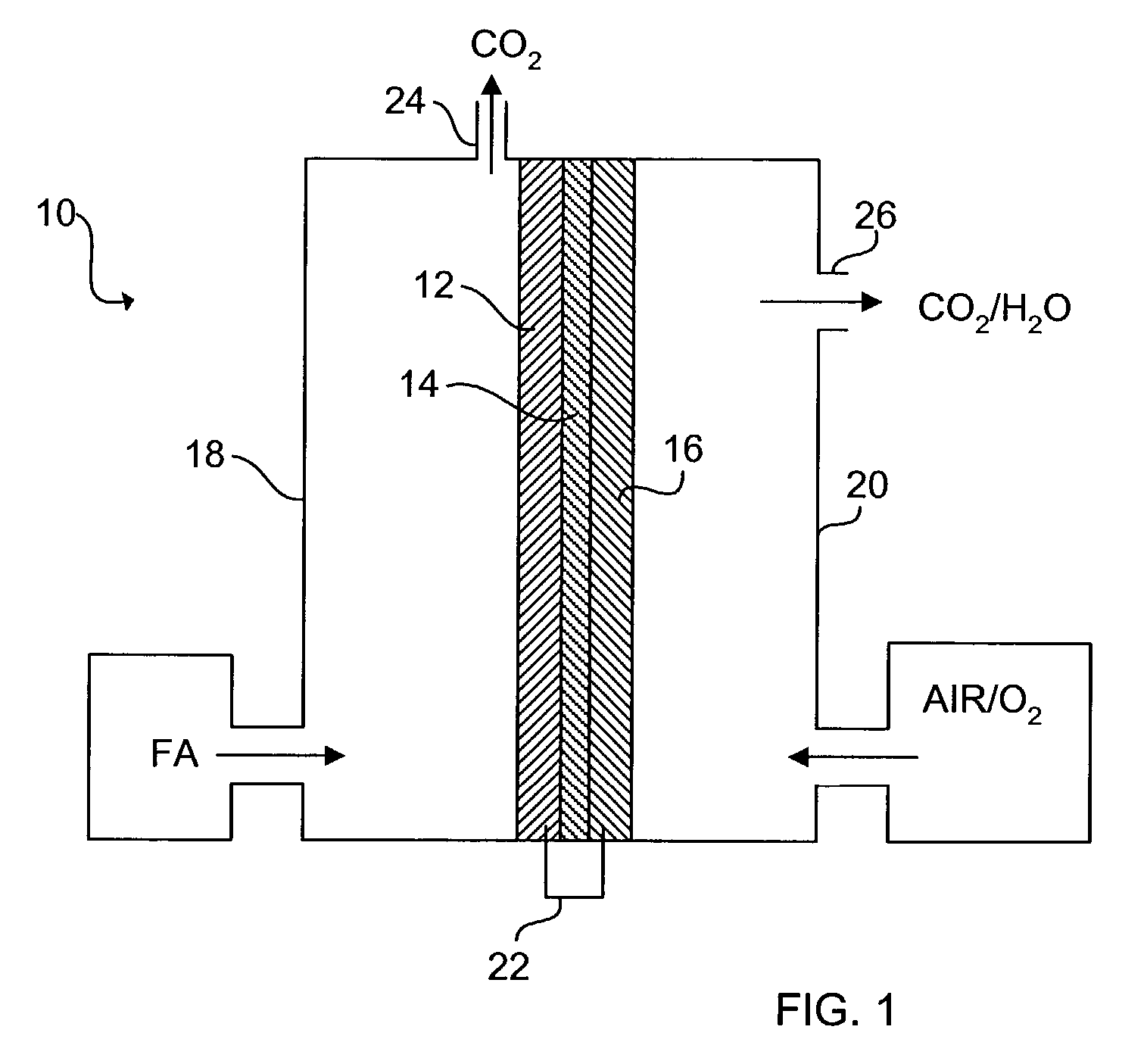Fuel cells and fuel cell catalysts
a fuel cell and catalyst technology, applied in the field of fuel cells and catalysts, can solve the problems of increasing the size of the cell, the cost, the start up time, and the complexity of the reformer, and the unresolved problems of the conventional direct methanol fuel cell
- Summary
- Abstract
- Description
- Claims
- Application Information
AI Technical Summary
Benefits of technology
Problems solved by technology
Method used
Image
Examples
Embodiment Construction
[0034]The schematic of FIG. 1 shows an exemplary direct organic fuel cell of the invention generally at 10. The fuel cell 10 includes an anode 12, a solid polymer proton-conducting electrolyte 14, and a gas diffusion cathode 16. The anode 12 is enclosed in an anode enclosure 18, while the cathode 16 is enclosed in a cathode enclosure 20. When an electrical load (not shown) is connected between the anode 12 and cathode 16 via an electrical linkage 22, electro-oxidation of an organic fuel occurs at the anode 12 and electro-reduction of an oxidizer occurs at the cathode 16.
[0035]The occurrence of different reactions at the anode 12 and cathode 16 gives rise to a voltage difference between the two electrodes. Electrons generated by electro-oxidation at the anode 12 are conducted through the linkage 22 and are ultimately captured at the cathode 16. Hydrogen ions or protons generated at the anode 12 are transported across the membrane electrolyte 14 to the cathode 16. Thus, a flow of curr...
PUM
| Property | Measurement | Unit |
|---|---|---|
| voltage | aaaaa | aaaaa |
| voltage | aaaaa | aaaaa |
| thick | aaaaa | aaaaa |
Abstract
Description
Claims
Application Information
 Login to View More
Login to View More - R&D
- Intellectual Property
- Life Sciences
- Materials
- Tech Scout
- Unparalleled Data Quality
- Higher Quality Content
- 60% Fewer Hallucinations
Browse by: Latest US Patents, China's latest patents, Technical Efficacy Thesaurus, Application Domain, Technology Topic, Popular Technical Reports.
© 2025 PatSnap. All rights reserved.Legal|Privacy policy|Modern Slavery Act Transparency Statement|Sitemap|About US| Contact US: help@patsnap.com



